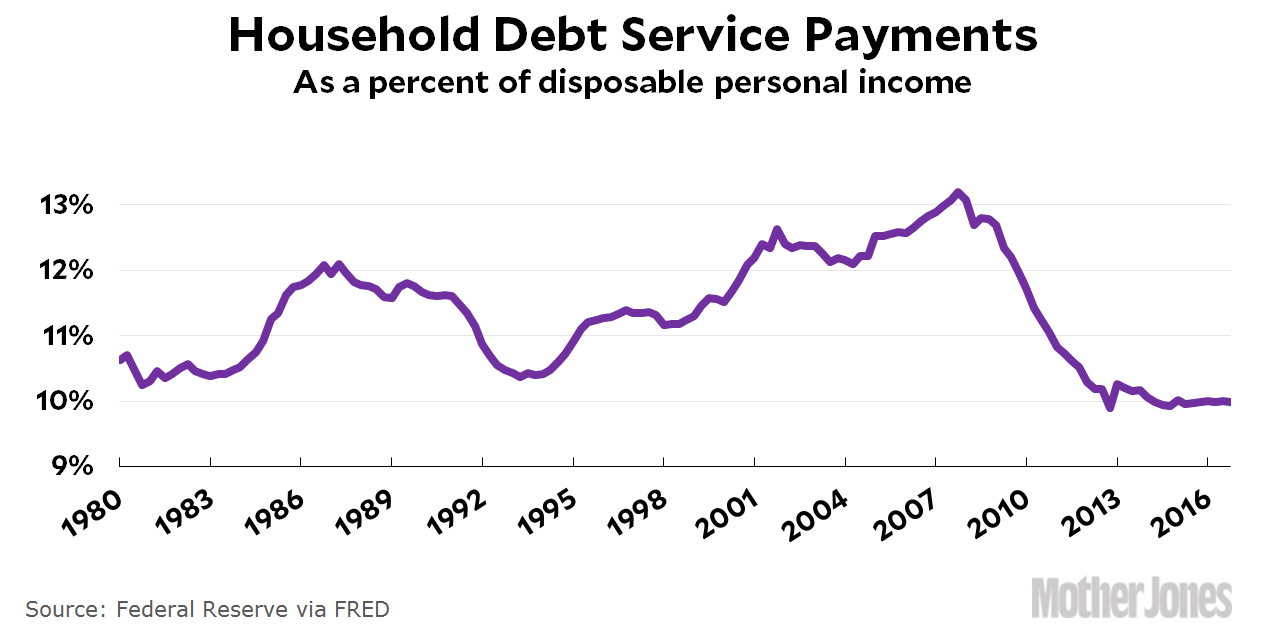The New York Times warns us that household debt has made a comeback:
Americans have now borrowed more money than they had at the height of the credit bubble in 2008, just as the global financial system began to collapse. The Federal Reserve Bank of New York said Wednesday that total household debt in the United States had reached a new peak — $12.7 trillion — in the first three months of the year, another milestone in the long, slow recovery of the nation’s economy.
The growing debt level…suggests a rising optimism about economic growth among banks and other lenders….Yet the borrowing peak also signals the potential for new risks to the economy….debt binge…stifle economic growth…ballooning debt…new wave of defaults…“This is not a marker we should be super excited to get back to,” said Heather Boushey, the executive director and chief economist at the Washington Center for Equitable Growth, a liberal think tank.
You know what else has increased over the past decade? That’s right: the population of the United States. Also GDP. Also inflation. And you know what’s decreased? Interest rates. It’s misleading clickbait reporting to write about a dumb, nominal, aggregate number like total debt just because you can get a good news hook out of the fact that it’s surpassed its previous peak. In fact, the Federal Reserve explicitly warned against this when it released these figures yesterday. Instead, you should take a look at how much households are actually spending to pay off their debt. Here it is:

Debt service has not only been flat for nearly five years, it’s been flat at its lowest level in 40 years. If you want to write about growing student debt, as the Times article does, that’s fine. But overall household debt hasn’t “made a comeback.” It’s at historically low levels and, at the moment, doesn’t show the slightest sign of increasing.


















